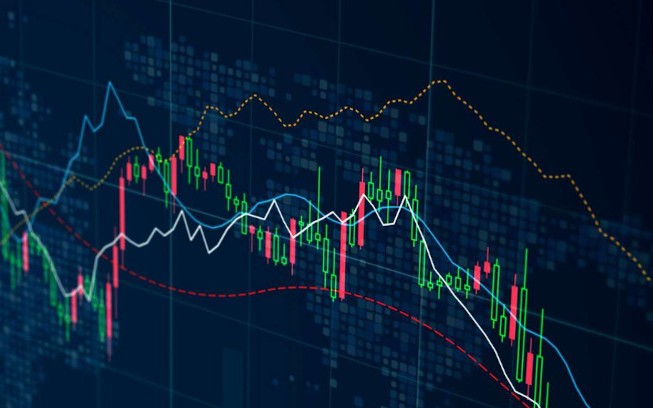
Forex Trading Tutorial: A Comprehensive Guide for Beginners
Forex trading, also known as foreign exchange trading or currency trading, is the process of exchanging one currency for another in the foreign exchange market. This market is enormous and is considered one of the most liquid financial markets in the world. With a daily trading volume exceeding $6 trillion, it is essential to understand how forex trading works before diving in. In this article, we will guide you through the fundamentals of forex trading and provide you with the necessary tools for successful trading. For reliable brokers in Uzbekistan, check out forex trading tutorial Uzbekistan Brokers.
Understanding the Forex Market
The forex market is decentralized, meaning it has no physical location or central exchange. Trading occurs electronically over-the-counter (OTC), which connects traders, brokers, and financial institutions worldwide. The forex market operates 24 hours a day, five days a week, allowing traders to participate at any hour, making it a popular choice for those interested in trading online.
Currencies and Currency Pairs
In forex trading, currencies are quoted in pairs. A currency pair indicates the value of one currency relative to another. For example, the EUR/USD pair represents the value of the Euro against the US Dollar. The first currency in the pair is called the base currency, and the second is the quote currency. Understanding how to read currency pairs is crucial for forex trading.
Key Concepts in Forex Trading
Pips and Lots
A pip, or percentage in point, is the smallest price move in a currency pair, usually representing a change in the fourth decimal place (e.g., 0.0001). A lot is a standard unit size in forex trading; a standard lot is 100,000 units of the base currency. There are also mini lots (10,000 units) and micro lots (1,000 units). Understanding these concepts helps traders manage their positions and understand their potential profits or losses.
Leverage and Margin
Leverage allows traders to control larger positions with a smaller amount of capital. For example, with a leverage ratio of 100:1, you can control a $100,000 position with only $1,000 in your trading account. While leverage can amplify profits, it also increases the risk of significant losses, so it’s crucial to use it wisely. Margin refers to the funds required to open a leveraged position. Understanding margin calls and account equity is vital for risk management in forex trading.

Choosing a Broker
Selecting the right forex broker is essential for your trading success. Factors to consider include regulation, trading platform usability, spreads and commissions, available currency pairs, customer support, and education resources. It’s advisable to conduct thorough research and read reviews before opening an account with any broker. Brokers often provide demo accounts which are an excellent way to practice trading without risking real money.
Developing a Trading Strategy
A trading strategy is a systematic approach to forex trading, based on specific criteria for entering and exiting trades. Traders generally employ two main types of analysis: fundamental analysis and technical analysis.
Fundamental Analysis
Fundamental analysis involves evaluating economies, regular news events, economic indicators, and political events that can influence currency values. Traders use this information to predict currency movements and make informed trading decisions. Important factors to consider include interest rates, inflation, employment data, and GDP growth.
Technical Analysis
Technical analysis focuses on price movements and historical data to forecast future performance. Traders use charts and various indicators, such as moving averages, Relative Strength Index (RSI), and Fibonacci retracement levels, to identify trends and potential reversal points. Understanding chart patterns and trends can significantly enhance your trading capabilities.
Risk Management in Forex Trading
Effective risk management is crucial for long-term success in forex trading. Here are some important strategies to consider:
- Set Stop-Loss Orders: Always use stop-loss orders to limit potential losses on trades.
- Diversify Your Portfolio: Avoid putting all your capital into one currency pair. Diversification can help mitigate risk.
- Use Proper Position Sizing: Determine how much of your trading capital to risk on each trade, generally no more than 1-2% of your total capital.
- Stay Informed: Keep up with market news and changes in economic indicators that may impact the forex market.

Types of Trading Styles
Forex trading styles vary widely among traders. Here are some of the most common styles:
Scalping
Scalping involves making multiple trades throughout the day, usually holding positions for only a few minutes. Scalpers aim to profit from small price changes and need to be highly attentive to market movements.
Day Trading
Day traders buy and sell currencies within the same trading day, closing all positions before the market closes. This style requires a solid understanding of market conditions and the ability to react quickly to price changes.
Swing traders hold positions for several days or weeks, aiming to profit from longer-term price movements. This style allows for a more comprehensive analysis of market trends and can be less stressful compared to day trading.
Position Trading
Position trading is a long-term approach that involves holding positions for weeks, months, or even years. Traders using this strategy typically rely on fundamental analysis to identify trends and opportunities over time.
Conclusion
Forex trading offers incredible opportunities for profit, but it also carries significant risks. By understanding the basic concepts, developing a robust trading strategy, and implementing effective risk management practices, you can enhance your chances of success in the forex market. Remember to stay informed, continually educate yourself, and remain disciplined in your approach. Whether you are just starting or looking to improve your trading skills, this forex trading tutorial aims to provide a strong foundation for your trading journey. Good luck!
